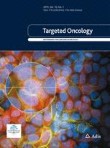|
Medicine by Alexandros G. Sfakianakis,Anapafseos 5 Agios Nikolaos 72100 Crete Greece,00302841026182,00306932607174,alsfakia@gmail.com,
Αρχειοθήκη ιστολογίου
-
►
2023
(272)
- ► Φεβρουαρίου (141)
- ► Ιανουαρίου (131)
-
►
2022
(2066)
- ► Δεκεμβρίου (80)
- ► Σεπτεμβρίου (170)
- ► Φεβρουαρίου (190)
- ► Ιανουαρίου (203)
-
►
2021
(7399)
- ► Δεκεμβρίου (186)
- ► Σεπτεμβρίου (472)
- ► Φεβρουαρίου (851)
-
▼
2020
(2517)
- ► Δεκεμβρίου (792)
-
▼
Νοεμβρίου
(1101)
-
▼
Νοε 23
(50)
- The inhibition effect of natural food supplement a...
- Prognostic Value of Soluble Programmed Cell Death ...
- microRNA-211-mediated targeting of the INHBA-TGF-β...
- Dose Fractionation During Puberty is More Detrimen...
- Isotoxic Intensity Modulated Radiotherapy in stage...
- Polymorphonuclear-MDSCs facilitate tumor regrowth ...
- The quality of reporting general safety parameters...
- Modification of the 8th American Joint Committee o...
- Interferon-lambda ( IFNL ) germline variations and...
- Hepatocellular carcinoma: Intratumoral EpCAM-posit...
- Phase 1 Trial of LVGN7409 (CD40 Agonist Antibody) ...
- Camrelizumab Combined With Chemotherapy for Recurr...
- A Study on the Safety and Effectiveness of IBI318 ...
- ARGONAUT: Stool and Blood Sample Bank for Cancer P...
- Tramadol Hydrochnoride as Adjuvant to Local Anesth...
- Genetically Engineered Cells (MAGE-A1-specific T C...
- Anti-angiogenic Agents Plus Anti-PD-1 Antibodies f...
- CLL Induction Treatment With Venetoclax and Ibruti...
- Identification of Genetic Determinants for Treatme...
- Pembrolizumab as Neoadjuvant Therapy for Resectabl...
- Intestinal Microbiota in Prostate Cancer Patients ...
- Anti-CD19 FasT CAR-T Cell Therapy for B Cell NHL
- Pyrotinib, Trastuzumab And Abraxane in HER2-positi...
- Impact of (Neo)Adjuvant Therapy Associating Anthra...
- De-Escalation Protocol Of HPV Mediated Oropharynge...
- PREselection of Patients at Risk for COgnitive DEc...
- OH2 Oncolytic Viral Therapy in Pancreatic Cancer
- Silicon Microsieve Device vs Cell Surface Marker-b...
- A Study to Evaluate Camrelizumab Plus Apatinib as ...
- Fluorescence Molecular Endoscopy and Molecular Flu...
- Identification and validation of a six-gene signat...
- Risk stratification for prediction of locoregional...
- Association between five types of Tumor Necrosis F...
- STAT3 regulates miR93-mediated apoptosis through i...
- Genomics and prognosis analysis of epithelial-mese...
- Overriding sorafenib resistance via blocking lipid...
- Development and validation of an RNA binding prote...
- STAT3 regulates miR93-mediated apoptosis through i...
- Optimizing the use of telemedicine in oncology car...
- Safety and clinical activity of a new anti-PD-L1 a...
- Combined Inhibition of G{alpha}q and MEK Enhances ...
- Therapeutic potential of NTRK3 inhibition in desmo...
- Recommendation regarding the cranial upper border ...
- Impact of prior cancer history on the survival of ...
- Whole-brain irradiation differentially modifies ne...
- The impact of lifecourse socio-economic position a...
- High cumulative doxorubicin dose for advanced soft...
- Bladder cancer stage and mortality: urban vs. rura...
- Circ-ZNF124 downregulation inhibits non-small cell...
- Weekly versus triweekly cisplatin-alone adjuvant c...
-
▼
Νοε 23
(50)
- ► Σεπτεμβρίου (21)
- ► Φεβρουαρίου (28)
-
►
2019
(12076)
- ► Δεκεμβρίου (19)
- ► Σεπτεμβρίου (54)
- ► Φεβρουαρίου (4765)
- ► Ιανουαρίου (5155)
-
►
2018
(3144)
- ► Δεκεμβρίου (3144)
Ετικέτες
Πληροφορίες
Δευτέρα 23 Νοεμβρίου 2020
The inhibition effect of natural food supplement active ingredients on TP63 carcinoma cell
Prognostic Value of Soluble Programmed Cell Death Ligand-1 (sPD-L1) in Various Cancers: A Meta-analysis
|
microRNA-211-mediated targeting of the INHBA-TGF-β axis suppresses prostate tumor formation and growth
|
Dose Fractionation During Puberty is More Detrimental to Mammary Gland Development Than an Equivalent Acute Dose of Radiation Exposure
|
Isotoxic Intensity Modulated Radiotherapy in stage III NSCLC – A feasibility study
|
Polymorphonuclear-MDSCs facilitate tumor regrowth after radiation by suppressing CD8+ T cells
|
The quality of reporting general safety parameters and immune-related adverse events in clinical trials of FDA-approved immune checkpoint inhibitors
|
Modification of the 8th American Joint Committee on Cancer staging system for gallbladder carcinoma to improve prognostic precision
|
Interferon-lambda ( IFNL ) germline variations and their significance for HCC and PDAC progression: an analysis of The Cancer Genome Atlas (TCGA) data
|
Hepatocellular carcinoma: Intratumoral EpCAM-positive cancer stem cell heterogeneity identifies high-risk tumor subtype
|
Phase 1 Trial of LVGN7409 (CD40 Agonist Antibody) as Single Agent and Combination Therapies in Advanced or Metastatic Malignancy
|
Camrelizumab Combined With Chemotherapy for Recurrent or Advanced Cervical Neuroendocrine Carcinomas
|
Αναζήτηση αυτού του ιστολογίου
! # Ola via Alexandros G.Sfakianakis on Inoreader
-
Does CBD Oil Lower Blood Pressure? This article was originally published at SundayScaries." Madeline Taylor POSTED ON January 13, 20...
-
Abstract Purpose Clinicians must balance the risks from hypotension with the potential adverse effects of vasopressors. Experts have rec...





